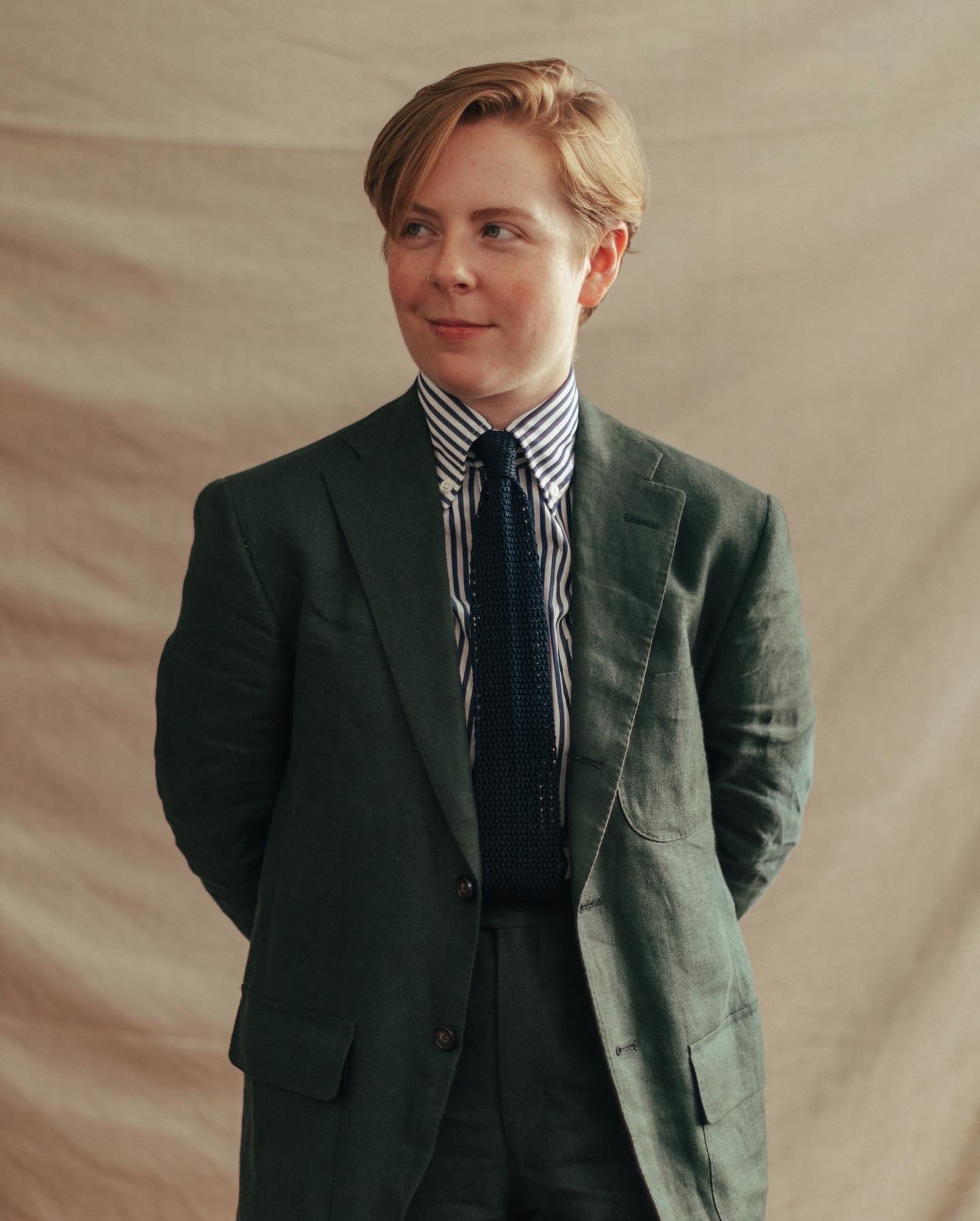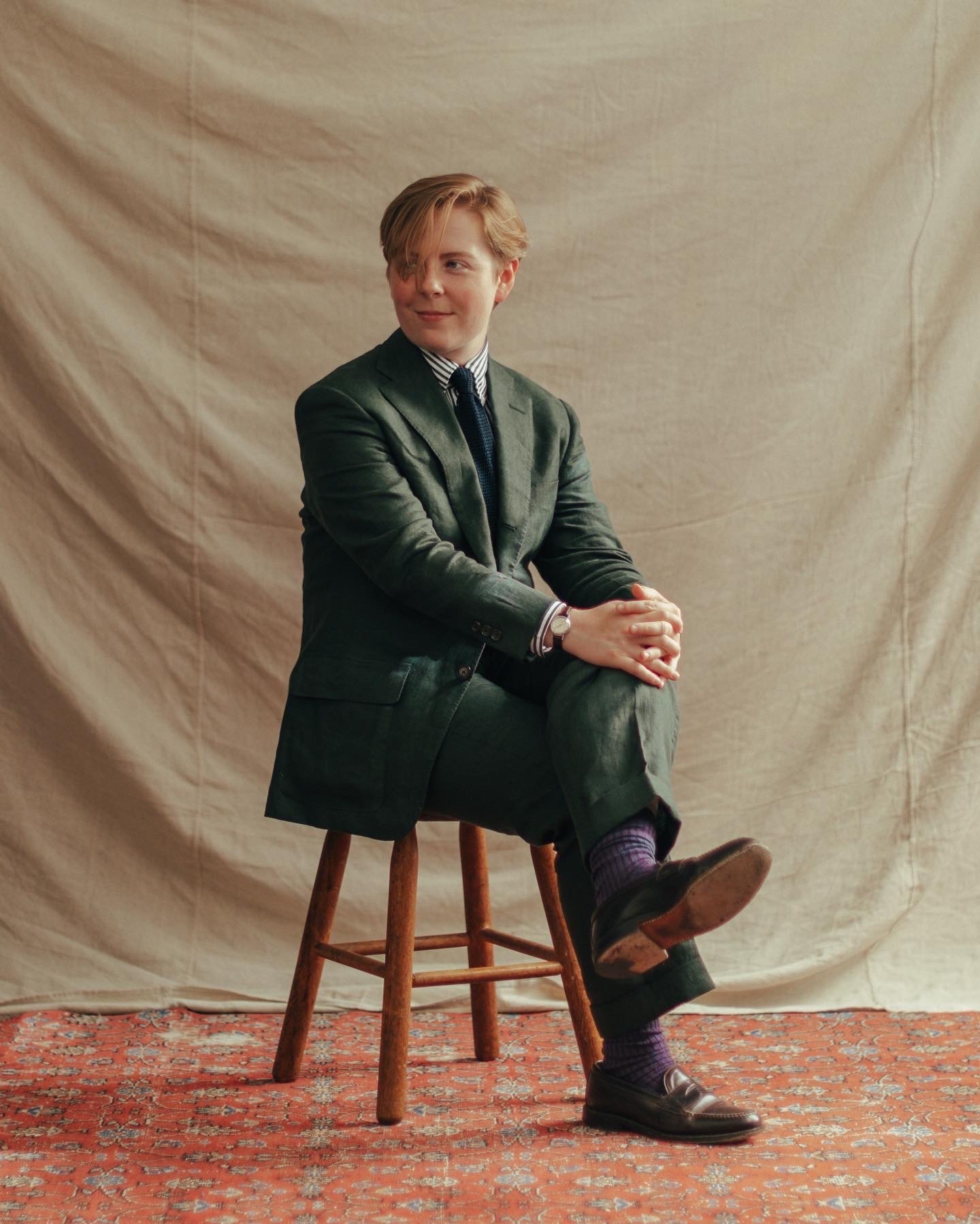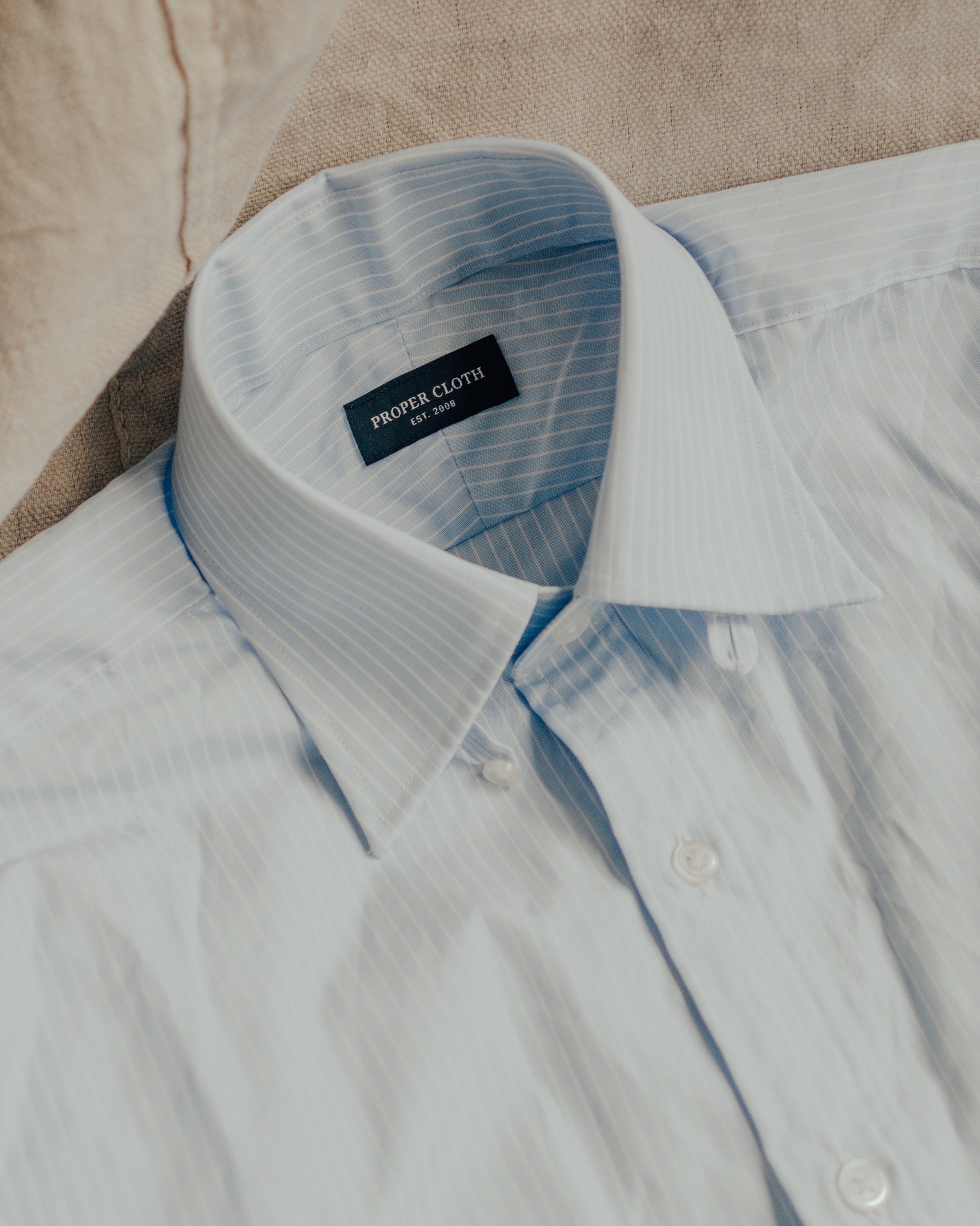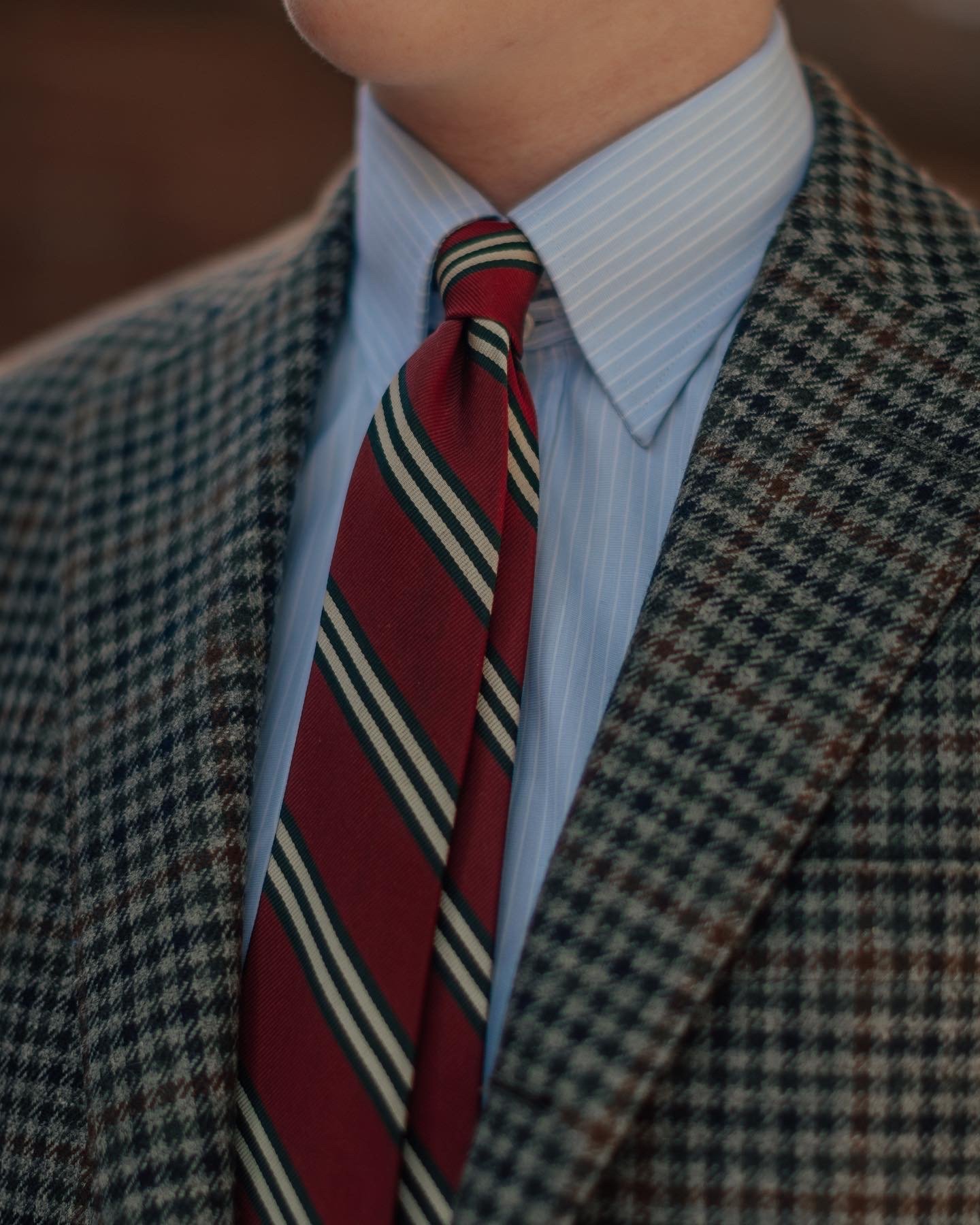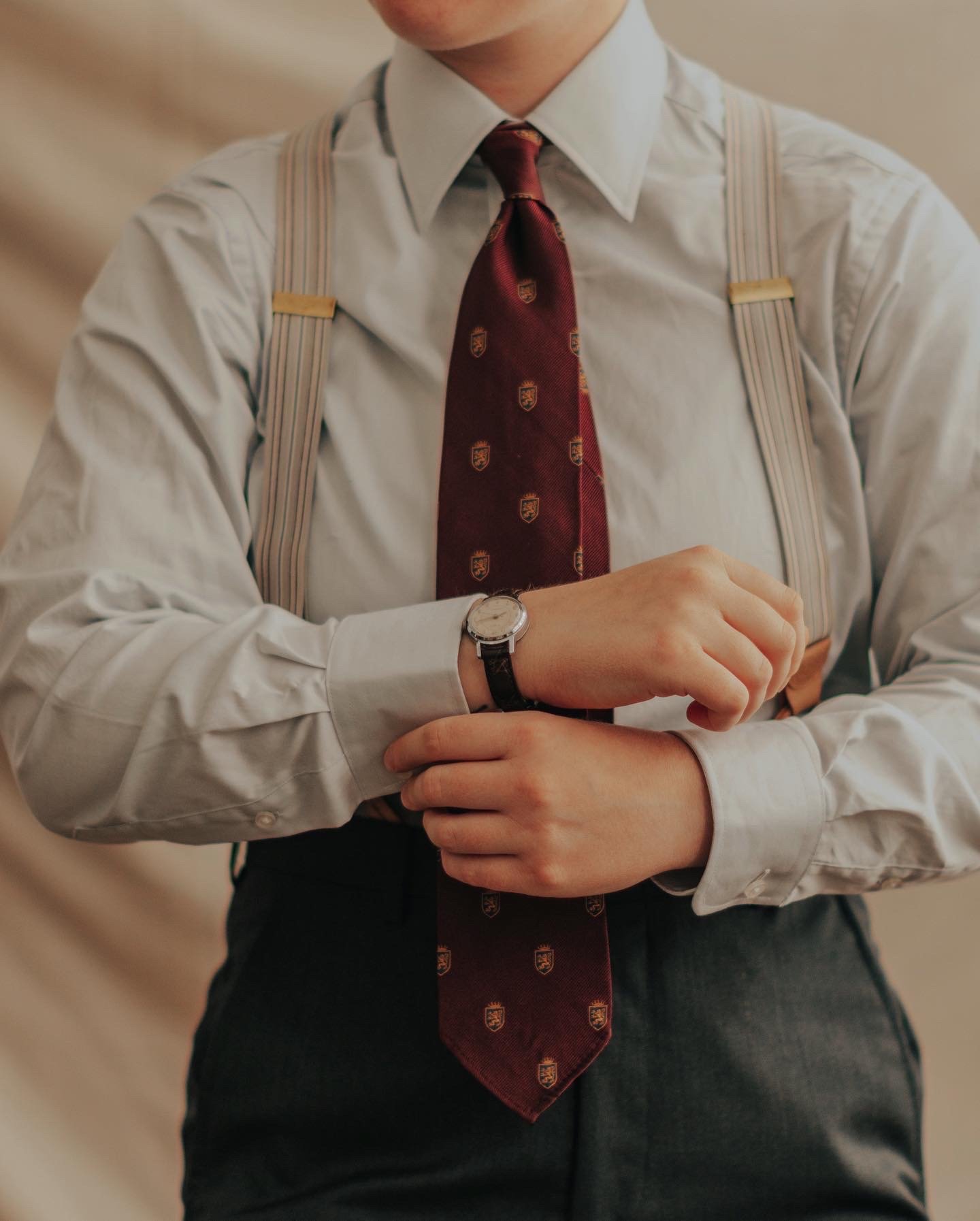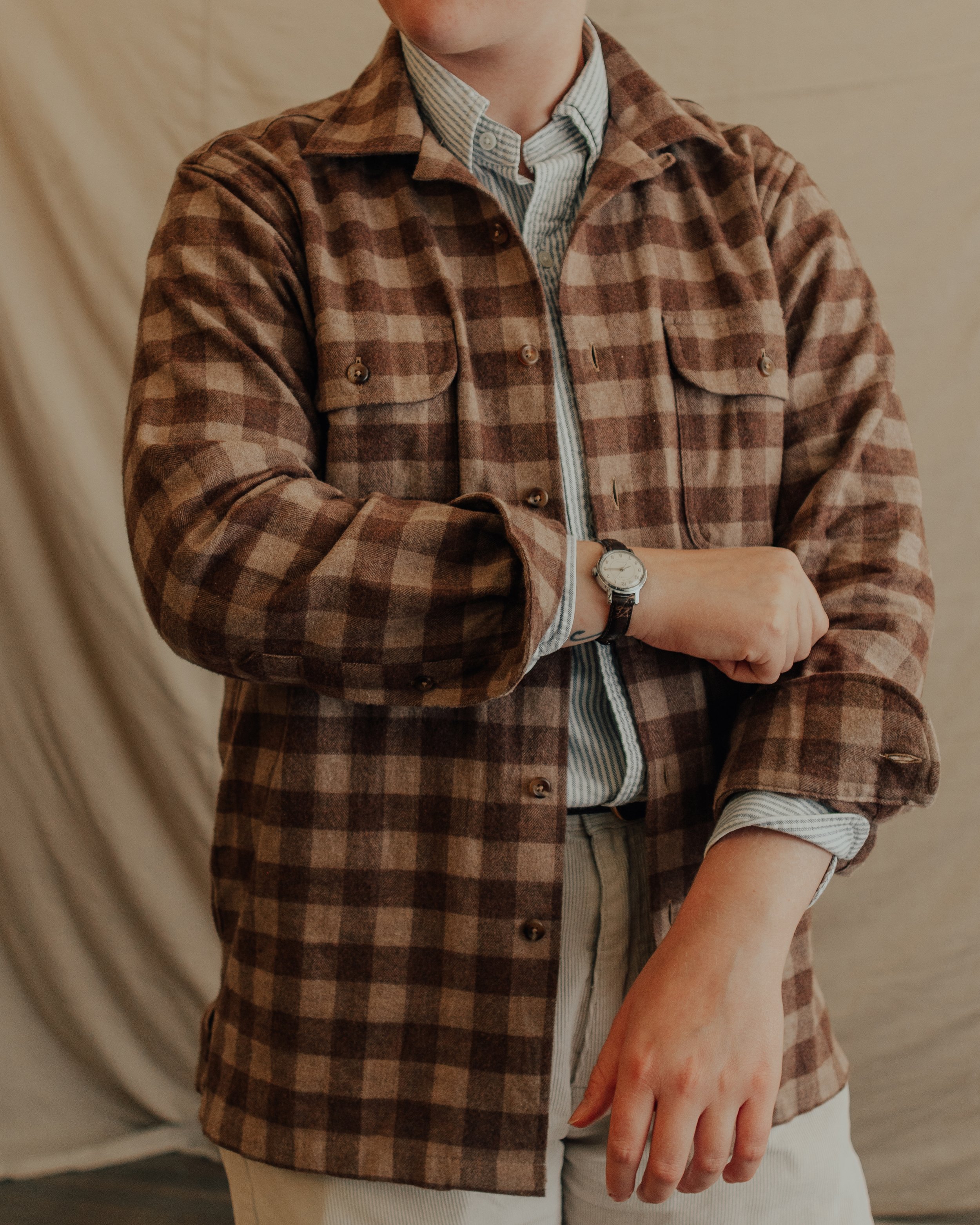5 Essential Ivy Style Shirts
Ivy style in its canonical, heyday form pretty much revolves around a checklist of hyper-specific garments that function as a capsule wardrobe, and if there’s one thing I’d place at the top of that checklist, it would be the oxford cloth button-down (OCBD) shirt. Shirting is–in my opinion–the keystone of an outfit, and when it comes to Ivy style, a lot of people subscribe to the idea that the shirting “category” begins and ends with the OCBD. However, if you dig a bit deeper into the history of the aesthetic and the time periods of the 50s and 60s, you’ll discover there are a couple additional options out there.
1. The Button-Down Shirt
Like I said, I’d point to the OCBD as item number one on the Ivy style checklist, so I think it’s only right to start this outline of Ivy shirting with the button-down. There’s a lot of debate about when exactly this shirt style was first introduced, but most people agree it came about during the 19th century when polo players in the UK added buttons to their shirt collars to keep them from flapping around during matches.
The lore behind the shirt making its way to the U.S. points to Brooks Brothers introducing it to their garment offerings around 1900 when the company began to gain prominence with their off-the-rack tailored clothing. The style can now be found in just about any store from H&M to Thom Browne.
There are a ton of opinions surrounding the perfect construction of a button-down shirt, but I personally prefer 3-3.5” collar points, a 6-button placket, single-button barrel cuffs, and the absence of a button on the back of the collar (all it does is mess with a tie). Whether or not I prefer fusing depends on the shirt fabric–I hate it used with oxford cloth, but think it helps broadcloth stand up a bit more.
2. The Tab Collar Shirt
The button-down shirt might be the most iconic shirt style in the Ivy canon, but it isn’t my favorite. That would be the ever elusive tab collar shirt. Similarly to the button-down, the tab collar was invented by the Brits and then migrated over to the US in the early- to mid-20th century. Popular sartorial figures like the Duke of Windsor and James Bond (lots of Bond outfits were influenced by the Duke) popularized the style, though it’s never garnered enough attention to really exist in mainstream menswear, making it very difficult to find.
What makes the tab collar shirt my favorite is that it never fails to produce a clean look. The tab itself, consisting of either a snap- or button-closure, not only secures the tie knot in place and gives it a bit more of a pop, it also keeps the points of the shirt from looking askew and flipping up above the lapels of a suit jacket or sport coat.
3. The Point Collar Shirt
Although the Ivy heyday is pretty strictly the 50s and 60s, the earlier decades of American menswear from the 20s to the 40s also saw Ivy influence in the form of darker sack suits, paired with bluchers, repp ties, and the third essential Ivy shirt–the point collar shirt.
I consider the point collar shirt to be the most conservative of the styles in the Ivy wardrobe, and really only like the look of it when made from solid-color fabric due to its staid roots in the aesthetic. Solid white and blue are the most common colors, but greys and tans also look nice and existed in the heyday as spillover from military uniforms.
Similarly to the button-down shirt, I prefer point collar shirts to feature 3-3.5” collar points, a 6-button placket, single-button barrel cuffs, and, most importantly, for the spread of the collar not to appear too wide.
4. The Club Collar Shirt
The club collar shirt is like the fun, drunk cousin of the point collar shirt. This style dates back a bit further than most of the others on this list to the 19th century. It originated as the uniform collar worn by boys attending Eton College in England, and became popular in the US around 1900.
This style of shirt typically, but not exclusively, features a contrasting white collar against either solid or patterned (usually striped) fabric. Due to the playful nature of the rounded collar points and contrast collar, this shirt style aligns more closely with dandiness and the preppy go-to-hell (GTH) look than with the stoic vibes associated with the point collar shirt.
The spread of the club collar can really vary from brand to brand. Less distance between the two “points” works well for the inclusion of a collar pin, but I think a wider spread has its pros too in that it flows nicely into a jacket’s lapels.
5. The Camp Collar Shirt
The most casual shirt style on this list is the camp collar shirt. I’m sure Ivy sticklers will disagree with me on including this style, but I think it has a solid standing–to a point–in the aesthetic. The camp collar shirt is somewhat of an outlier when compared to the others on this list because it originated not in the UK or US, but in Cuba.
I have very narrow goalposts when it comes to including the camp collar in Ivy style. I consider it Ivy only in the context of it having been worn as a sport shirt or “vacation” shirt during the 50s and 60s. Pendleton popularized the camp collar in the 60s when the brand’s famous board shirt took off in the mainstream, and other outdoor outfitters followed suit, selling the style on heavier wool shirt jackets.
I think the camp collar is perfect when worn on vacation at the shore in the summer or upstate at a cabin in the winter due to its relaxed nature and versatility across different fabrics and weights. One key detail to look for is the inclusion of a loop closure.
This post is sponsored by Proper Cloth. To learn more about Proper Cloth’s custom shirting and to get 10% off your first order, click here.
